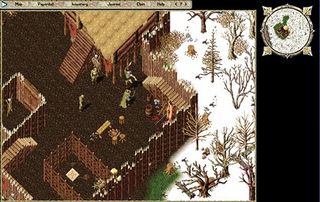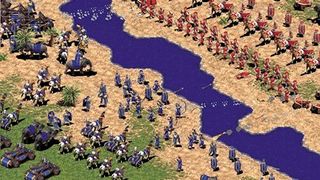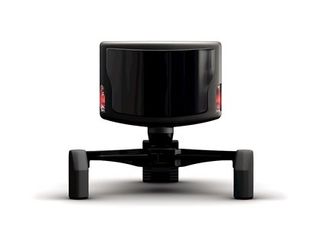The first games we’d recognise as PC games were being played in the early ’80s. There is a richness, diversity and depth to PC gaming that we frequently forget. At one time, the budget software market was a place to try, sample and celebrate classics. Now the budget shelves are a sad place – piled high with unsold copies of Stronghold.

Online, it’s a different story. Good Old Gameshave been releasing DRM-free versions of classic PC games for over two years, and their service is outstanding. But they’re pretty much alone, and their catalogue is limited to a handful of publishers who understand that retro gaming is worth investing in. There are publishers who clearly don’t get it, who’ve done little to push their back catalogues online.
Microsoft (Age of Empires, Midtown Madness), EA (Syndicate, Dungeon Keeper, Ultima), and 2K (Mafia, Hidden and Dangerous) are all publishers who’ve worked on retail budget games, but have all but ignored the budget online market. They’re also increasingly reliant on reviving old game series. EA are rumoured to be bringing back Syndicate, yet the original Syndicate isn’t available to buy anywhere.
2K have invested millions in the new Mafia, to great effect – it looks incredible. Yet if we wanted to sample the original game, we’d have to rely on the secondhand market. And Microsoft have their own Games for Windows download store to pimp, yet they’re selling Xbox pap like Game Room, rather than PC games we’d actually like to play again.

This is ludicrous. We live in a world of unlimited shelf-space. Suits and executives across the globe have long paid lip-service to the idea of the long-tail, of providing massive choice. It’s time for them to act on it and give us back our PC gaming heritage.
Right now, netbook PCs may not be all that great for gaming, but it’s done little to staunch their sales. Research firm DisplaySearch makes the relatively pessimistic estimate that netbook shipments in 2010 will sit in the neighbourhood of 40 million, growing a further 20 percent the following year. That’s an awful lot of PCs which aren’t having games played on them.

But that just means there’s a huge amount of room to grow, as new iterations of mobile devices tackle the age old problems of power and heat in ever more efficient ways. If every netbook sold in 2011 had a 3D chip inside it, you can bet that Spider Solitaire would give way to World of Warcraft and other GPU-hungry games.
But this isn’t inevitability. Though there’s a popular desire for gaming to be portable, it’s a situation that could be better fostered. Microsoft have been foolish in following Apple’s closed, controlling strategy: issuing separate platforms for mobile and desktops. This attempt to silo their mobile market may be useful to them in the short term, cutting out competitors like Google, but it’s shortsighted: the cost for developers to adapt to new closed platforms recur with every generation of technology. At a time when the number of PC gamers could be increasing dramatically, it is instead remaining stagnant.It's gaining new audiences but not capitalising on them.
The power problems that mobile devices face in keeping up with home PCs are, however, temporary. Mobile phones will soon have the same 3D capabilities as a five year old PC – we’ve already seen the handsets running Quake 3, and mobile hardware is only going to keep catching up. The key to making mobile platforms into game platforms is convergence, and doing that means ensuring that all devices sing from the same hymn sheet.
The graphics card? Invented for the PC. High Definition gaming? PC monitors have been running at 1080p for years. 3D gaming? Nvidia are leading the charge, and you don’t even need to buy a special TV to do it. The PC always has been, and still is, the home for new gaming hardware. Except when it comes to peripherals, where we continue to languish at the back. It’s time to change that.

Multi-touch
The iPhone has championed a new way to control games: by pawing at them with your meaty fingers. We need to now bring multi-touch to PC gaming, where it can provide a more accurate and tactile method of directing troops into battle or squishing our dungeon foes. The mouse and keyboard can only ever be abstract, but the potential of touch-sensitive screens is the ability to reach out and feel your games.

The unexpected
What PC peripherals most need is to leap into the weird and unexpected. They need the homebrew kit that people show off on YouTube, such as motion-control faux guns with in-built monitors. Headtrackers like the excellent TrackIR, which let you look around your cockpit, and the headbands that translate micro-movements of your brow into frags in Unreal 3.
Things that don’t yet exist. Manufacturers need to push them, developers need to support them, gamers need to try them. A whole world of gaming potential lies just beyond our reach, because we haven’t yet created the USB Potential Reacher necessary to grab it.
May 13, 2010


Could motion control cause a game market "crash"?
How waggle may one day crumple the industry

The 10 best artsy PC games
Join the beret-wearing art crowd and peruse these highfalutin installations

The new wave of indie MMO gaming
How the PC's best bedroom coders are outclassing the big boys
